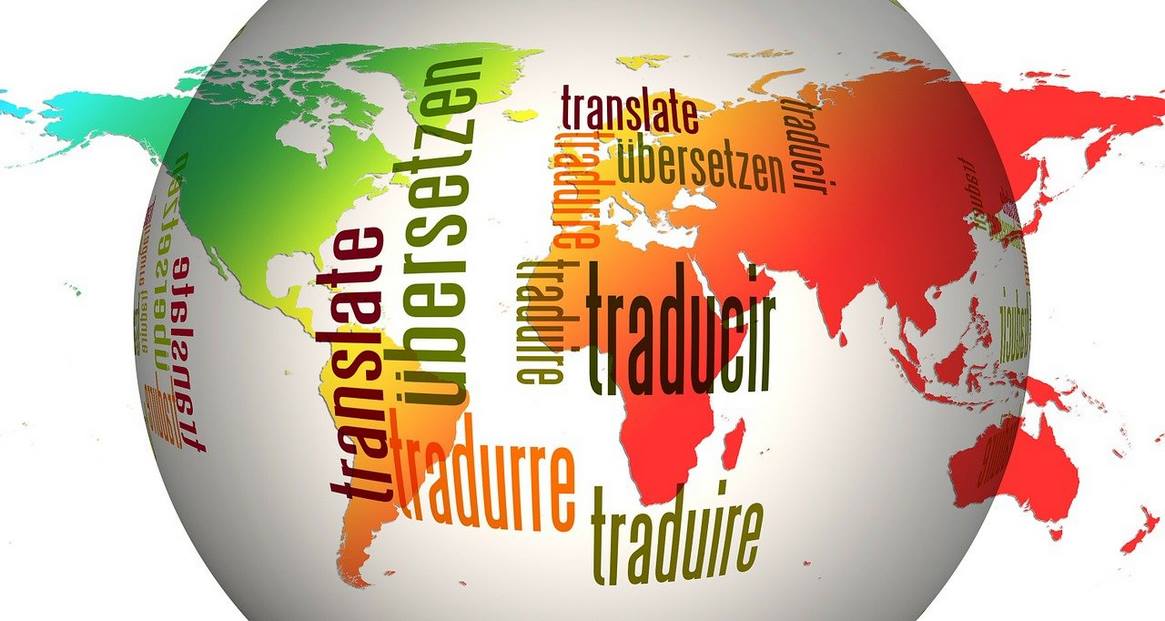SEO-Standard Multilingual Website Design: Unlocking the Global Market
In today’s interconnected world, businesses cannot afford to limit themselves to a single language. With the rise of e-commerce and online marketplaces, having a multilingual website has become essential for reaching a global audience and expanding business opportunities. However, creating a successful multilingual website is not just about translating content into different languages. It requires careful consideration of search engine optimization (SEO) standards to ensure that the website reaches its intended audience and ranks well on search engine result pages (SERPs). In this article, we will delve into the world of SEO-standard multilingual website design and uncover the strategies and techniques that will help your website reach a wider audience and boost its online visibility.
Understanding SEO-Standard Multilingual Website Design
Before we dive into the technical aspects of designing a multilingual website, it is important to understand what exactly a multilingual website is. A multilingual website is a website that offers content in multiple languages, catering to audiences from different linguistic backgrounds. This can be achieved through various methods, such as using language-specific subdomains or folders, creating separate websites for each language, or using a language switcher to toggle between languages on a single website. The design of a multilingual website depends on several factors, including the target audience, business goals, and budget.

Before delving into the technical details of creating a multilingual website, it’s crucial to grasp the definition of what constitutes a multilingual website
Choosing the Right Languages
The first step i0n designing a multilingual website is determining which languages to include. This decision should be based on your target audience and their preferred languages. Conduct thorough research to identify the countries or regions where your target audience is located and the languages they speak. This will help you prioritize which languages to include on your website and tailor your content accordingly.
When choosing languages, it is also important to consider the demand for those languages on search engines. Google has a tool called “Google Trends” that can give you insights into the popularity of different languages in different regions. This data can help you determine which languages are worth investing in for your multilingual website.
Translating Content vs. Localizing Content
Once you have identified the languages to include on your website, the next step is to translate your content. However, it is important to understand the difference between translating and localizing content. Translation simply involves converting text from one language to another, while localization goes a step further by adapting the content to suit the cultural and linguistic nuances of the target audience.
For SEO purposes, localization is crucial as it ensures that your content resonates with your target audience and ranks well on search engines. It involves not only translating the words but also adapting images, colors, and other design elements to align with the target culture. For example, if you are targeting a Middle Eastern audience, using images of people wearing traditional clothing or incorporating Arabic calligraphy in your design can make your website more relatable to them.
Best Practices for Website Navigation
Website navigation plays a crucial role in the user experience of any website, and this is especially true for a multilingual website. When designing a multilingual website, there are some best practices to keep in mind to ensure seamless navigation for users, regardless of their language.
- Use clear and concise labels for navigation links: Avoid using generic terms like “Home” or “Products” as they may not have the same meaning in different languages. Instead, use descriptive labels that accurately reflect the page’s content.
- Include a language switcher: A language switcher allows users to change the language of the website with ease. Place it in a prominent location, such as the header or footer, so that it is easily accessible.
- Use appropriate flags or icons: While using flags or icons to represent different languages may seem like a convenient option, it can be culturally insensitive and confusing for users. It is best to use language abbreviations or full names instead.
- Implement breadcrumb navigation: Breadcrumb navigation helps users keep track of their location within the website and allows them to easily navigate back to previous pages.
Multilingual Website SEO Practices
Creating a multilingual website that is visually appealing and user-friendly is only half the battle won. To ensure that your website reaches its intended audience and ranks well on search engines, it is crucial to implement SEO practices specific to multilingual websites. Here are some best practices to follow:

Designing a visually attractive and user-friendly multilingual website is just one part of achieving success
Implement Proper Hreflang Annotations
Hreflang annotations are HTML tags used to indicate to search engines which version of a webpage is intended for which language or region. This helps search engines understand which language to display in the SERPs based on the user’s location and language preferences. Hreflang annotations should be included in the HTML code of each page of the website and can be implemented in various ways, such as using specific tags for each language version or using a sitemap.
Optimize Meta Titles and Descriptions for Each Language
Meta titles and descriptions are snippets of text that appear on search engine result pages and give users a preview of the content on a webpage. It is important to optimize these elements for each language version of your website to improve its visibility on search engines. Conduct thorough keyword research for each language and incorporate relevant keywords into your meta titles and descriptions to increase the chances of your website appearing in relevant search queries.
Create Unique URLs for Each Language Version
Having unique URLs for each language version of your website allows search engines to differentiate between them and avoid duplicate content issues. For example, if your English website uses the URL “www.example.com/en”, then the French version should have a different URL, such as “www.example.com/fr”. Additionally, make sure to use language-specific keywords in your URLs to improve their relevancy.
Use Localized Content and Keywords
Localizing your content and keywords is crucial for SEO success in different regions. Simply translating your English keywords into another language may not yield the same results as people from different cultures may use different search terms to find the same products or services. It is important to conduct comprehensive keyword research for each language version of your website and use localized keywords to improve its ranking on search engines.
Incorporate Social Media Sharing Buttons
Including social media sharing buttons on your website allows users to easily share your content with their network, increasing your website’s reach and potential for backlinks. It is important to use social media platforms that are popular in your target market and language, such as WeChat for Chinese speakers or VKontakte for Russian speakers. Additionally, make sure to localize your social media profiles and content to cater to specific audiences.
Technical Aspects of SEO-Standard Multilingual Website Design
Apart from the user experience and SEO considerations, there are several technical aspects to keep in mind when designing a multilingual website. Here are some key elements to consider:

In addition to focusing on user experience and SEO factors, there are various technical aspects to consider when developing a multilingual website
Selecting a Content Management System (CMS)
A CMS is a software platform that allows you to create, edit, and manage digital content on your website. When choosing a CMS for a multilingual website, it is important to select one that supports multiple languages and has features specifically designed for multilingual websites. Popular CMS options for multilingual websites include WordPress, Drupal, and Magento. These platforms offer plugins and extensions that facilitate easy translation, localization, and implementation of other technical aspects, such as hreflang annotations.
Choosing a Hosting Solution
The location of your website’s hosting server can affect its loading speed and, consequently, its SEO performance. Therefore, it is important to choose a hosting solution that is located close to your target audience. For example, if your target audience is in Europe, choose a hosting server in Europe. Additionally, make sure to use a reliable hosting solution that can handle the traffic on your website and provide good security.
Implementing Language-specific Markup
Markup, also known as structured data, is code added to a webpage to help search engines understand its content. Language-specific markup refers to implementing different markup codes for each language version of your website. This allows search engines to display rich snippets for your website in their respective languages. For example, you can use schema.org markup for English and RDFa for French.
Setting Up Language-specific Redirects
Language-specific redirects play an important role in directing users to the correct language version of your website. This is especially useful when using generic top-level domains (gTLDs), such as “example.com” for the English version and “example.de” for the German version. When a user visits “example.com”, they should be automatically redirected to “example.de” if they are located in Germany or have their browser language set to German. This ensures a seamless user experience and helps avoid duplicate content issues.
Mobile Responsiveness
With the rise of smartphone usage, having a mobile-responsive website has become non-negotiable. This is even more important for a multilingual website, as users from different countries may access it through different devices. To cater to all users, it is important to design a mobile-friendly website that adjusts to different screen sizes and resolutions.
Challenges of Multilingual Website Design
Designing a successful multilingual website comes with its fair share of challenges. Here are some common challenges that you may encounter and how to overcome them:
Translating Idioms and Culture-specific References
Translating idioms and culture-specific references can be tricky as they may not have direct equivalents in other languages. They can also be interpreted differently in different cultures, which can result in confusion or even offense. When translating content, it is important to consider these nuances and adapt the language accordingly.
Managing Multiple Language Versions
Maintaining multiple language versions of a website can be daunting and time-consuming, especially for businesses with limited resources. It is important to have a solid plan in place to keep all versions updated and consistent with each other. This can involve using translation tools, setting up automatic updates, or hiring a team of translators.
Localizing Design Elements
As mentioned earlier, localization goes beyond just translating text. It also involves adapting design elements to suit the target audience’s culture. This can be challenging as different cultures may have different color preferences, symbols, and design aesthetics. It is important to conduct thorough research and work closely with designers to create a design that resonates with your target audience.
Conclusion
In today’s globalized world, businesses must cater to diverse audiences with different languages and cultures. A multilingual website can significantly expand a business’s reach and unlock new markets. However, creating a successful multilingual website requires more than just translation efforts. Implementing SEO standards specific to multilingual websites is crucial to ensure that your website reaches its intended audience and ranks well on search engines. By following the best practices and strategies outlined in this article, you can create a website that not only looks visually appealing but also delivers an exceptional user experience and performs well on search engines. So, take the plunge and unlock the global market with SEO-standard multilingual website design!













Post Comment